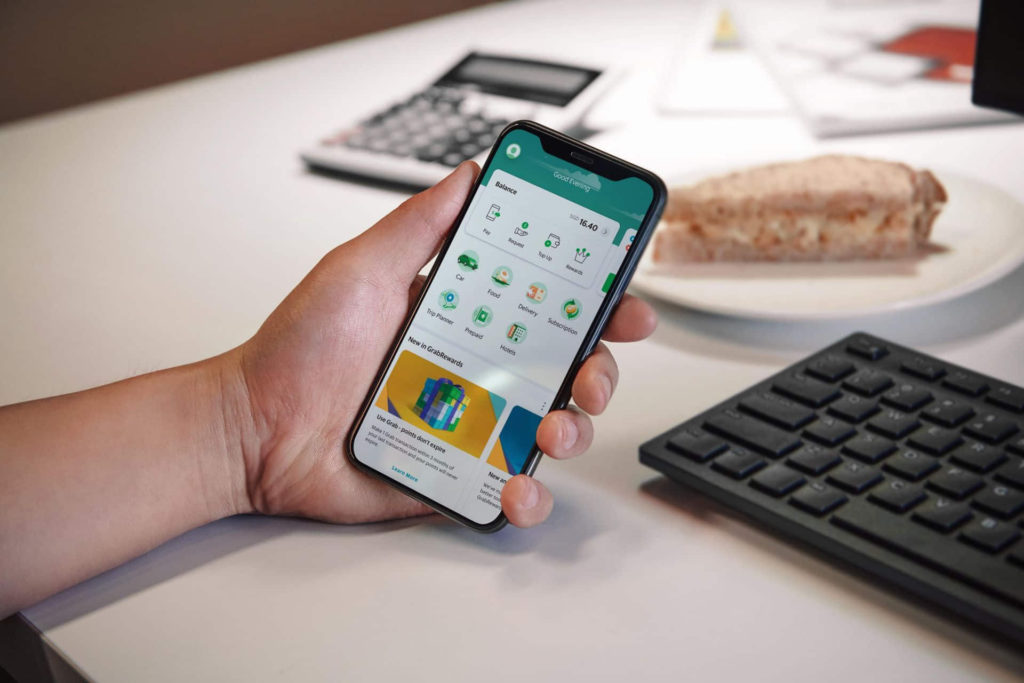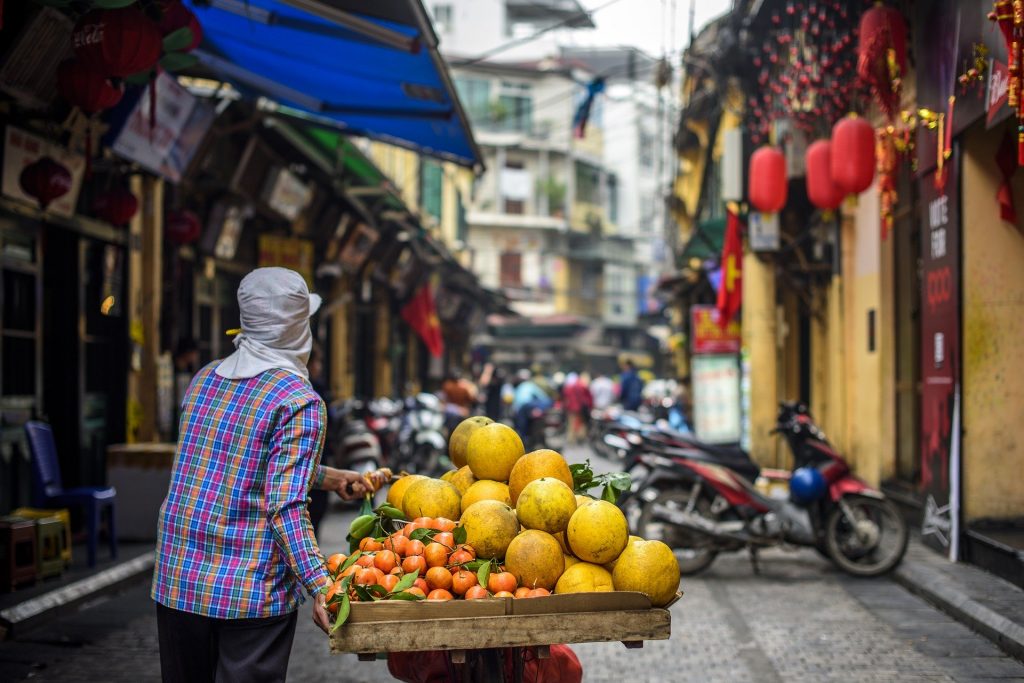Grab Financial Group’s senior managing director Reuben Lai says he is passionate about using business channels to create impact and change in the lives of Grab customers.
Lai joined Grab in 2015 when the company offered just one service—rides. He was a believer in Anthony Tan’s mission to build a company that has a dual bottom line in financial outcomes and social influence. “That resonated with me,” Lai told KrASIA.
At Grab, Lai was able to put that sense of purpose to work. The company’s primary fintech product, GrabPay, went online in January 2016. In the beginning, Grab’s financial services were built based on drivers’ needs. For many driver-partners, Grab is their entry point into the formal banking system. New drivers are required to provide a bank account as part of their registration with Grab. If they don’t have an account, the company helps them apply for one on the spot.
“What was quite interesting was I ended up going to every single country negotiating with the top banks so our drivers can easily open bank accounts, and asking whether they could provide loans for our drivers to purchase a car,” Lai said. Before Grab entered the picture, drivers were typically working for fleet owners who would take a sizable chunk of the profits, leaving very little for the people behind the wheel.
“I got turned down by almost everyone until there was a finance company in Indonesia who said yes. We started creating the scoring, collection, and disbursement systems. That was the genesis of our lending business.” From there, Grab was able to partner with more financial institutions to offer new services, including insurance for drivers.
By signing up with Grab, driver-partners can get access to financial and banking services. These days, cashless transactions are becoming the norm. Not so long ago, this was still novel in emerging markets like Indonesia. For many people who aren’t in major cities, it still is.
“At Grab Financial Group (GFG), we build everything on three simple theses. It needs to be accessible, so we fractionalize and create ‘micro-everything’ products like microinsurance, microloans, and so forth,” said Lai. “Secondly, it has to be very convenient and seamlessly embedded into the everyday life of a customer. And the final one is transparency. We make our pricing very clear to customers.”
Today, GFG provides services in payments, lending, insurance, and wealth management for users across the region. In January, the firm raised USD 300 million led by South Korea’s Hanwha Asset Management. Lai said the company has been utilizing funds to invest in three areas—artificial intelligence and machine learning, digital banking development, and daily operations.

Healthy growth amid the pandemic
GFG recorded positive growth in 2020. “Last year was a very interesting year for us, as we saw the COVID-19 pandemic being a massive accelerator for the business. Payments really ramped up. We saw 500,000 new merchants join Grab. We also saw a really huge take-up on insurance and wealth products,” Lai said.
In GFG’s quarterly newsletter, Lai wrote that the firm had sold over 100 million insurance policies across Southeast Asia from April 2019 to February 2021. And in 2020, GrabPay was selected as the only e-wallet with no links to the government to disburse nearly USD 300 million of state funds to Malaysian citizens, as part of the Malaysian government’s ePenjana and eTunai relief programs.
Grab is also in the process of building a digital bank in Singapore after the Grab-Singtel consortium was deemed a “successful applicant” by the Monetary Authority of Singapore in December 2020.
While the city-state’s population is predominantly already served by the formal financial system, 40% of adults in Singapore are underbanked, Lai said. Most people are not prepared for retirement; they are underinsured and underinvested. Meanwhile, conventional banks move slowly. It can take weeks for new businesses and individuals to open bank accounts or acquire loans.
Just as GrabPay was built to provide drivers with access to a formalized financial system, the company is now doing the same for its customers, again invoking its three original principles.
The consortium is looking to populate around 200 roles by the end of this year, and it aims to launch the digital bank in 2022.
Besides Singapore, Indonesia is also a red hot market for digital banking with the emergence of new neobanks backed by tech companies, including Gojek’s 22% stake in Bank Jago and Sea Group’s own Seabank (previously Bank BKE). In February, Grab was reportedly eyeing a partnership with local lender Bank Capital for its push into digital banking, although the company denied this report.
“We’re very focused on serving the underserved and underbanked across Southeast Asia, and we see tremendous opportunities in Indonesia and other countries. We’re looking at it with interest but have nothing to announce at the moment,” said Lai.
Read this: ‘I lost my bike and could barely afford my three meals’—how the virus hit Indonesia’s gig drivers

Tightening competition in local markets
As the largest economy in Southeast Asia, Indonesia is crucial for Grab and its fintech arm. Aside from being a majority shareholder of Indonesia’s youngest unicorn, Ovo, Grab also invested in LinkAja, an e-wallet platform backed by state-owned companies. By partnering with LinkAja, Grab has gained access to clients within Indonesia’s SOE ecosystem.
“We believe that having an open ecosystem and being connected is very important. Financial services are very intertwined, so the only way for us to add value to a customer is to make sure they can move and manage their money in the simplest and most efficient way,” Lai said. “When the opportunity came up with LinkAja, we looked at it with the same perspective. This is a government-backed initiative, and they want to drive financial inclusion and bring more people into the digital payment system, which is a very good thing.”
Since 2019, LinkAja has been a payment option in Grab’s app. There will be more collaborations between the two platforms in the future, Lai said.
The competition in Indonesia continues to intensify as Grab’s biggest rival, Gojek, also poured money into LinkAja. Gojek is reportedly in advance talks for a mega-merger with Tokopedia, a close partner of Grab and another investor of Ovo.
Nevertheless, Lai said these matters are not of major concern for Grab. “Apart from integrating with Tokopedia, we also partner with other platforms like Lazada. Our aim is to create ubiquity, not a walled garden. We believe that as long as we keep the customer at the center of what we do, [the competition] shouldn’t be too disruptive for us.”
Beyond Indonesia, competition is stiff elsewhere in the region, like in Thailand and Vietnam, where Grab’s financial services usually run through partnerships with local banks or via investments in fintech firms. While local fintech players across eight Southeast Asian states are jumping on the fintech bandwagon, GFG’s regional reach and strategic partnerships have allowed the firm to ramp up use cases.
In Thailand, Grab partnered with Kasikorn Bank in November 2018 to roll out payment services after landing a USD 50 million investment from the bank. The link-up gives Grab a way to bring its users on board for a spate of financial services, and more importantly, an influential local ally. In Thailand, the mobile payments sector is particularly cutthroat. A handful of digital wallets—PromptPay, True Money, Rabbit Line Pay, and AirPay—have backing from the government or corporate venture capital arms.
In February 2020, capital injection to the tune of USD 706 million from Japanese megabank Mitsubishi UFJ Financial Group (MUFG) provided a shot in the arm for Grab’s fintech ambitions in the region. Thailand’s Bank of Ayudhya (Krungsri), a subsidiary of MUFG, rolled out loans specifically for Grab drivers and merchants in the country.
As Grab has ramped up its efforts in Thailand, Vietnam is another strategic market where GFG devoted a USD 500 million investment in August 2019. Before that, in 2018, the group also invested in Vietnamese fintech firm Moca to launch a digital wallet. It has been among the three most popular mobile wallets in the country ever since.
As most of GFG’s services are enabled through partnerships or investments, there are concerns over whether the partnership will restrict Grab’s ability to offer services firsthand. But Lai dismisses that notion. “None of these relationships restrict us,” he said.
Read this: Many forks in the road | Gojek’s ride to the stock market

Driving financial inclusion in a vastly unbanked landscape
With all these shrewd partnerships and investment, Grab is now part of the spending habits of the region’s vastly unbanked population. In all, 44% of the 655 million people in Southeast Asia’s burgeoning digital economy do not have bank accounts.
GFG’s services are particularly appealing or useful for young people who are comfortable with using their phones as means for transactions. Grab has amassed more than 214 million mobile downloads, accounting for 30% of the region’s population.
That success depends in part on name recognition. “GFG has the widest licensed footprint of any Southeast Asian fintech—the first in the region with access to e-money licenses in the six major economies of ASEAN,” Lai said.
The company’s massive customer base gives it the “one of the lowest costs of customer acquisition,” allowing it to overcome a hurdle that tends to hamper other fintech ventures. Grab’s overall scale puts it among the top companies to have the first pick of top talent from all over the world, according to Lai.
Southeast Asia is ripe for a fintech revolution driven by a fast-growing digital economy. Half of the region’s population remains unbanked, so the growth potential of fintech services is huge. At the moment, maintaining profitability and opening up channels for cash from international investors are key for a tech firm that wants to outrun the herd.
In mid-March, Grab was reportedly in talks for a merger with a special purpose acquisition company (SPAC) led by Silicon Valley investment firm Altimeter Capital Management, according to a report by The Wall Street Journal.
SPACs are shell firms that raise money through public offerings to acquire companies. In the past few months, they have become a popular pathway for private enterprises to go public, and are seen as a cheaper and more efficient fundraising choice than the traditional public listing process.
Lai did not comment on the timeline or Grab’s eventual listing location, but told KrASIA that GFG will support its parent company.
“For us, we are in this multi-generational business together. It’s a blessing to serve our customers in Southeast Asia. We gain a lot of benefits from cost acquisition, data, and customer engagement, so our role is to reinvest back into this flywheel and make our services even better for our customers,” said Lai.

